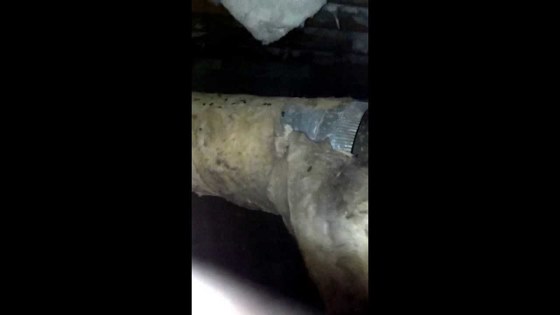
Tell-tale Signs of Rats and Mice include droppings, urine odors, gnawed holes, rub and gnaw marks, rodent runways, rodent nests, scampering noises and unusual pet behavior.
Rodent droppings are a sure sign that rats or mice are present, and will indicate the type of rodent, the size of the infestation, and where they are most active. Mouse droppings are small, less than one quarter inch, and pointed on both ends. Rat droppings are half an inch or larger. Norway Rat droppings are blunt at both ends, while Roof Rat droppings are have pointed ends. New droppings are shiny and putty-like in texture, while old ones are hard and crumbly.
Varying feces sizes indicate that juveniles and adults are present, and lots of droppings may be an indication of a large infestation. The location of the droppings indicates active areas where you should place bait or traps.
Rodent urine has a strong musky odor. With large infestations you can easily smell it.
Gnawed mouse holes are small, clear-cut, and about the size of a dime. Gnawed rat holes are large, about the size of a quarter, with rough torn edges.
Oily rub marks are left in places where rodents travel along walls. If rub marks smear, you know they are fresh. Gnaw marks on wood around the house also are a sign. Tooth marks about one eighth inch long are typical of rats and small scratch marks are a sign of mice.
Common rodent pathways are generally along interior walls, building foundations, ledges, pipes, electrical wires, conduits, tree branches and fence rails.
Norway rats nest in burrows outdoors deep in the ground. Roof rats typically nest above ground in attics, trees, or dense vegetation. Mice will shred paper, string, and other pliable materials to build their nests indoors.
Rodents are nocturnal. At night they often create scratching sounds as they run inside walls and along floors
Pets tend to act unusual when they hear or smell rodents in the house. They may appear extremely alert, bark, or begin to paw at spaces beneath refrigerators, stoves, or low-clearance pieces of furniture.
A MOUSE OR RAT PROBLEM IN YOUR HOUSE OR COMMERCIAL BUSINESS BUILDING
Rats can build nests inside your home, but you may also find evidence outside with rat burrows in the backyard. Outdoors, rats typically dig their burrows near building foundations or overgrown areas. You may also find them near a wood pile or under your garage. Rats in the backyard typically dig holds between 2 and 4 inches wide.
Indoors, rat nests are often found in attics, inside your walls or in hollow ceilings. Roof rats in particular tend to build above the ground instead of burrowing like the Norway rat.
If you have a rat or mouse infestation in your home, shed or barn, you are likely scrambling for a way to control the problem. You could get a cat, but there is no guarantee that the cat would actually be a mouser, and you may not want to expose a household pet to the risks that come with chasing mice and rats.98102. #how to control rats in a commercial business building #control roof rats #mice control #seattle rats
http://bit.ly/2eoLEZt